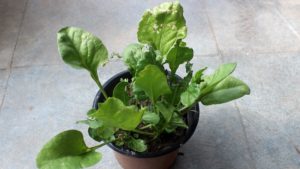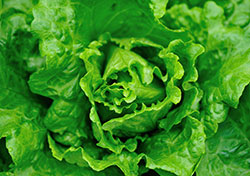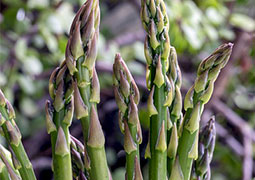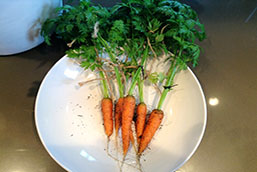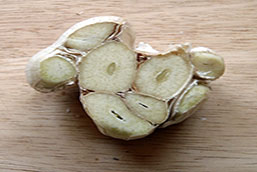Potatoes being a staple in millions of households has made it the 4th most important crop in the world next to rice, corn, and wheat and it will be a shame if you won’t try planting and harvesting your own potatoes for even at least once in your life.
Potatoes are totally heaven-sent. It’s a good alternative if you want to go on a diet but not entirely cutting out your carbs intake. On top of that, there are thousands of possible ways to enjoy potatoes without having to repeat your meals. There’s your fries, mashed potato, baked potato, roasted, and a whole lot more.
Now, you are probably on the edge of your seat, wondering how many more days will it have to take before you can harvest your homegrown potatoes. While you are waiting for that moment to happen, why not equip yourself first with the important details on how to harvest your potatoes without actually killing the plant.
Growing Conditions
Potato is a relatively high maintenance crop. You must observe accurate measures of water, sun exposure, and temperature, constant checking of sprouting foliage, and keeping it away from pests and diseases.
While there exists more than a thousand varieties of potatoes, each with varying growing conditions, these information are generally useful if you decide on planting potatoes on your own and in your own backyard
- Weather Conditions
In order to successfully grow a potato, it will require you to plant it during the cold season, ideally with a temperature between 15-20 (°C). However, this does not mean that they can tolerate frost. Some gardeners start planting roughly two months before the usual last day of frost.
In case of frost threat especially at night, make sure to cover the sprouting leaves with some organic or artificial covering but remember to remove it immediately in the morning.
- Sun Exposure
Whether you plant your potato directly onto the ground or in a container, make sure that it receives a sufficient supply of sunlight, for at least 6 hours everyday.
Its leaves that grow above the ground thrive in an area with full sun; on the other hand, the tubers that we usually fry, mash, or boil grow below the ground and too much sun exposure can turn its tubers to green which may be poisonous when consumed in large amounts.
Mulching can help protect the tubers from being exposed to too much sunlight, as well as keeping the soil moist for better quality harvest.
- Soil Requirements
More than the temperature or season, it is the readiness of the soil that mostly dictates if your potato is set to be planted.
First, ensure that the soil has a pH of 5.0 to 5.5 and the temperature must be at least 50°F (10°C). If you want to eventually harvest a relatively larger crop, you may opt to plant them in alkaline soil; however, by doing so you will be facing the possible threat of potato scab.
Also, make sure that the soil is fertile, well-drained, and light. If you want, you may add a compost or planting mix into the soil before planting.
- Watering
Even water distribution is the key to a good quality potato. Too much of it will misshape and rot the tubers, while less of it will dry out the soil so it is important to keep the plant moist. With this, it is important to evenly distribute an inch to 2 inches of water to the potato plants every week.
When the foliage starts to turn yellow and gradually peg out, you may stop watering the potatoes to prepare for the harvest.
- Spacing
To maximize the crop’s full size and avoid them from crowding, you must establish a foot apart distance to each of the potatoes. Additionally, the individual planting holes where the tubers will be cultivated must be 6 inches deep on the average. In preparing additional rows, make sure to set a distance between 20 and 30 inches.
Harvest Period
As the tubers below the ground mature and magnify, the leaves of the potatoes or the foliage gradually stops sprouting and eventually dies out.
Generally speaking, potatoes can already be harvested 2 to 3 weeks after they have finished flowering or the foliage have completely died. Once this happens, cut off the wilted foliage.
This period enables the crop to thicken its skin in preparation for the storage and consumption. Harvesting way too long than the recommended period may cause the tubers to rot.
Similarly, you may opt to harvest your potatoes post-maturity or even until the first frost— it won’t be much of a problem. Just take note that potatoes harvested in the perfect timing are proven to be more nutritious.
Process Of Harvesting Potatoes
Since you are trying to harvest potatoes and at the same time being cautious to not kill the entire plant, you will need to have quite a steady hand. In reality, you may harvest your potatoes on your own terms, whether you want it in pre, post, or exact maturity, it all boils down to the crop being healthy and free from pests and diseases.
Now, considering you did plant the potatoes in a moist, loose soil, the first part of harvesting should come off quite easily. Bring out a shovel or a spading fork and carefully dig through the edges of the crop, making sure not to damage the tubers underneath. Pull off a few potatoes as you prefer and put back the rest into the ground. Recover and water the soil to let the remaining tubers continuously grow.
Damaging the skin of the potatoes will result in rotting, so if you do not trust yourself with a shovel, you may opt to use your hands instead in harvesting potatoes.
You might also want to prioritize soft and slightly discolored ones in your first harvest and leave the best ones for the next harvesting period so you won’t end up dealing with a bunch of damaged potatoes in the future.
Harvesting Tips
To make sure that your potatoes have properly matured upon harvesting, you may run a quick test by checking the crop’s skin.
If it is thick and sticking firmly into the flesh, it means it is already good to go. However, if the skin appears to be thin and easily peels off, it simply shows that the potatoes have not yet reached their full maturity, also known as “new potatoes”, and need to be retained into the ground, unless otherwise you purposefully want to harvest it earlier.
Similar to when the tubers are still planted below the ground, harvested potatoes must be kept away from too much sunlight or it will elicit a toxic property that turns the potatoes to green.
To avoid killing the entire plant when harvesting, just carefully dig out a few tubers from a single plant and restore the hole back into its former condition so the rest of the tubers will have more time to mature.
To make this a little less complicated and more convenient, you may try planting potatoes in straw bales. When the harvesting period comes, all you need to do is lift up a layer of straw, harvest the tubers directly under it and create a whole new layer for a new batch of seed potatoes.
Storing And Using
Proper storing of potatoes dictates how long the crop will be useful. For instance, since new potatoes have thinner skins, they cannot be stored and must be immediately used right after harvested, otherwise it will be put to waste.
Mature potatoes, on the other hand, requires curing that thickens and hardens the skin in preparation for storage. This curing process will require you to set your tuber in a dark, cool, and dry place right after harvesting with a temperature of about 7-15°C for 2 weeks.
After curing, rub off any soil and dirt stuck to the potatoes’ skin and then store it again in a similar environment. This will allow the potatoes to last for up to a month. Just make sure not to store them in the fridge and keep them away from the apples as they defuse a certain gas that spoils potatoes.
Popularly, potatoes are found on most bars and restaurants usually as a side dish. What’s good about using potatoes in the kitchen is that you can keep your dish waste-free. Yes, you read that right. Many professional chefs have been cooking even the skin, usually disguised as flavorful, crispy chips.
There are literally countless ways to use potatoes. From hors d’oeuvres, appetizers, soup, main dish, side dish, dessert, even to drinks, all these will definitely please your palate. You can cook it in a grill, fry it in a pan, bake it in your oven, or smash it with your pestle, whichever pleases you.
Who knows, there might still be other dishes that are yet to be discovered; but first things first, go plant and harvest.


